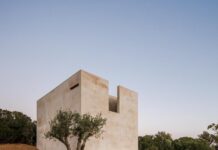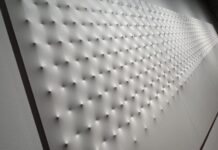Design graphics and models have never overcome the detrimental imbalance of financial rewards, as identified with “art versus architecture” evaluations in the marketplace. For example, a drawing for a building embodies all of the same conceptual, illustrative and aesthetic qualities as an artist’s sketch for a painting, however, it is invariably worth one third (or less) in the gallery circuit. From the perspective of public opinion, the architectural drawing is regarded as a marginal artefact, associated with the visual clarification of a practical service; whereas the painter’s sketch is esteemed as a purely aesthetic stepping stone, leading to a treasurable conclusion.
The ability to synthesize the graceful fusion of the arts was implicit in the delivery of 14th Century art, architecture and public space. With the advent of “Modernism” and the Industrial Age, technology-driven priorities displaced “integrative thinking” with various categories of specialization. One profession was allowed to borrow aesthetic cues or material ingredients from the other; but such liberties were rigorously circumscribed. For example, a piece of sculpture was permitted as independent embellishment on a facade, or installed in a plaza, but its role had to be identifiable as supplementary décor and always in servitude to the notion of the building-as-the-big-event. Similarly, a sculptor could compose an architectonic assembly of I-beams and bricks as a work of abstract art, just so long as there were no claims of intent that encroached on the sanctity of functional habitat.
The shift to private art for the private client, in the late 19th Century, unleashed an experimental and anti-establishment insurgency, as well as new aesthetic frontiers battling for supremacy among a profusion of art movements. Simultaneously, the direction of progressive architecture became equally independent in its pursuit of design as a champion of the industrial revolution, as a testing ground for new technologies, and as the provider of functional lifestyle in a world of burgeoning population. These divergent paths, separating art and design, also supported the rationales for a climate of defensive posturing and occupational belittlement between the two disciplines. As a consequence of this alienation, it became the imperious view of architects that “artists were merely self-indulgent generators of visual entertainment” and an equivalent dismissal by artists that “architects were simply perpetrators of compromised aesthetic in subjugation to utility”.
By appropriating spectators’ kinetic and unpredictable activity as the content of art, the post-minimalist sensibility erased those prescriptive boundaries which separated sculpture and performance. The accommodation of human activity had normally been associated with buildings, because of architecture’s professional obligation to provide serviceable habitat. In contrast, the post-minimalist inclusion of bodily movement explored the equivocal connections between duty-driven routines, spontaneous theatre and psychology of situation. From this perspective, the ascension of a flight of stairs was no longer viewed as just a mundane process of going up or down. It could be seen, instead, as an art experience in itself…directly related (but not restrained by) the usual litany of spatial issues in architecture.







